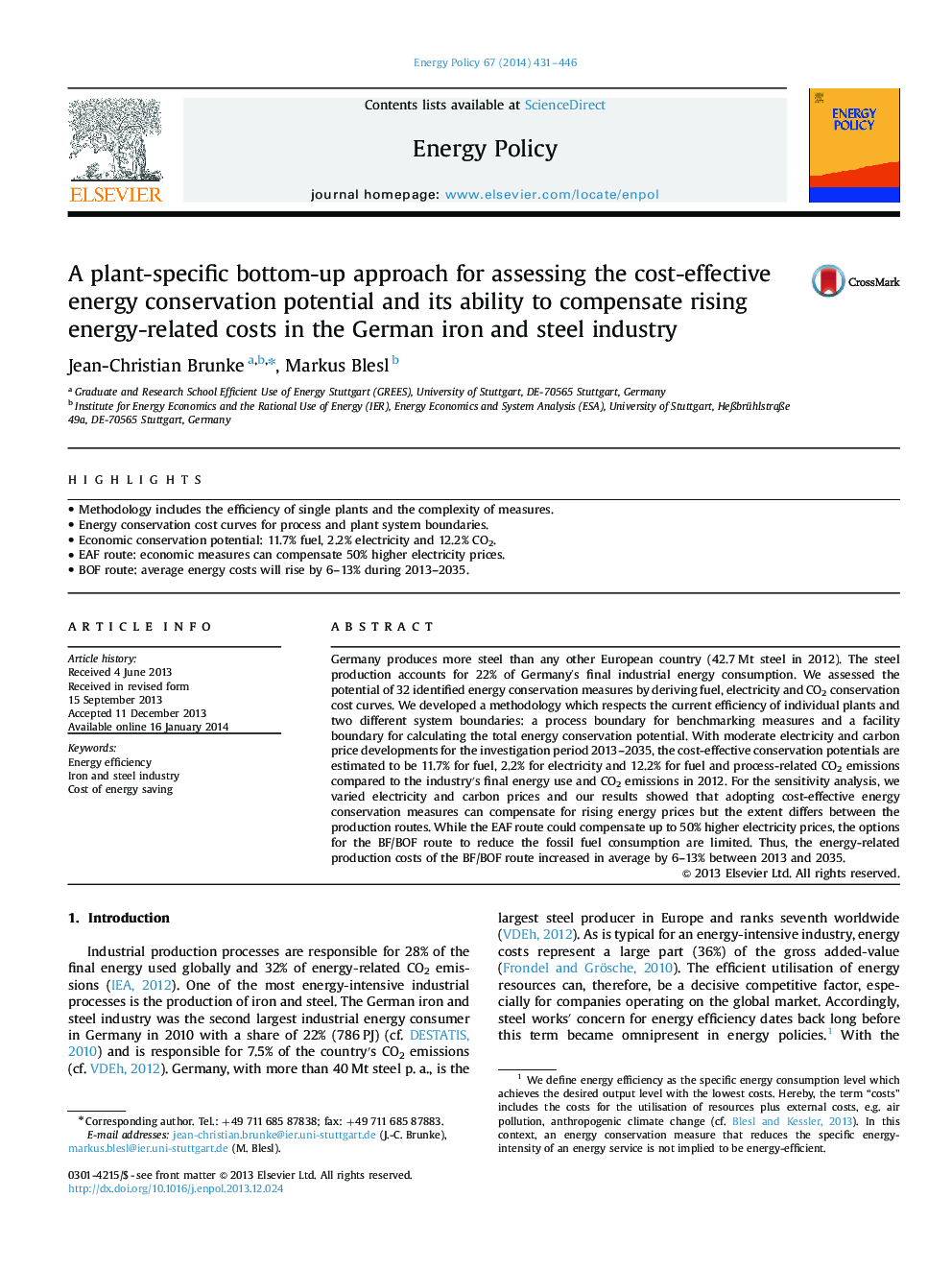| Article ID | Journal | Published Year | Pages | File Type |
|---|---|---|---|---|
| 7402468 | Energy Policy | 2014 | 16 Pages |
Abstract
Germany produces more steel than any other European country (42.7Â Mt steel in 2012). The steel production accounts for 22% of Germany's final industrial energy consumption. We assessed the potential of 32 identified energy conservation measures by deriving fuel, electricity and CO2 conservation cost curves. We developed a methodology which respects the current efficiency of individual plants and two different system boundaries: a process boundary for benchmarking measures and a facility boundary for calculating the total energy conservation potential. With moderate electricity and carbon price developments for the investigation period 2013-2035, the cost-effective conservation potentials are estimated to be 11.7% for fuel, 2.2% for electricity and 12.2% for fuel and process-related CO2 emissions compared to the industry's final energy use and CO2 emissions in 2012. For the sensitivity analysis, we varied electricity and carbon prices and our results showed that adopting cost-effective energy conservation measures can compensate for rising energy prices but the extent differs between the production routes. While the EAF route could compensate up to 50% higher electricity prices, the options for the BF/BOF route to reduce the fossil fuel consumption are limited. Thus, the energy-related production costs of the BF/BOF route increased in average by 6-13% between 2013 and 2035.
Related Topics
Physical Sciences and Engineering
Energy
Energy Engineering and Power Technology
Authors
Jean-Christian Brunke, Markus Blesl,
